
Things are getting a little crazy in the lightweight gaming mouse market. Today, the Turtle Beach Burst II Air is officially available. Weighing in at just 47g, Burst II Air is one of if not the lightest gaming mice from a big-name brand that I can think of. With the recent Viper V3 Pro weighing in at 54g, is the $99 Burst II Air a worthwhile alternative? Be sure to hit the video below to see all of the details.
Overview
If the Burst name sounds familiar, that’s because it was a mouse line from Roccat, which Turtle Beach bought in 2019 and now all of its product lines are being transitioned to Turtle Beach. And if the 47g Burst II Air is what we can expect from this change, I’m all for it.
In addition to the Burst II Air, Turtle Beach is also releasing new headsets and a keyboard. Be sure to head over and catch all of the news.
Quick Specs
- Weight: 47g
- Size: L: 122.2m , W: 67.3mm, H: 39.2mm
- Sensor: Owl-Eye optical
- Sensitivity: 26K DPI
- Max speed: 650 IPS
- Connectivity: 2.4GHz, Bluetooth
- Polling rate: 1K Hz
- Switches: Titan Optical: 100m click life
- Battery life: 40H 2.4GHz / 120H BT
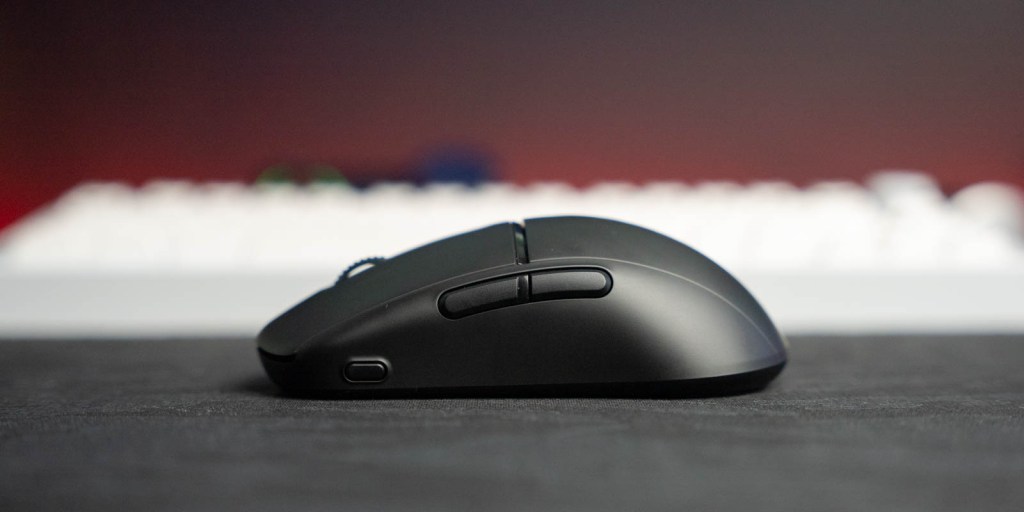
Design/Shape
At its core, the Burst II Air is a lightweight, symmetrical FPS-focused gaming mouse. It uses the typical 5-button design layout but also adds a dedicated DPI button on the left side in front of where your thumb sits. Through Turtle Beach’s SWARM II software, that button can be customized. For me, though, it’s just a bit out of the way to really be anything I would use often.
While many companies have reduced weight by making the top shell a honeycomb-style shape, like Glorious’ mice, the Burst II Air keeps a solid shell. This is always preferred for me.
Underneath, though, there are a couple of small cutouts that I can only assume help to reduce the weight of the Burst II Air. There is also a little slot to hold the USB-A receiver when in transport.
There is also a three-way power switch that can switch the mouse to 2.4GHz wireless or Bluetooth. It’s pretty rare that a mouse this light would also support Bluetooth connectivity, but that is a bonus for those who want a multi-purpose peripheral. I wouldn’t recommend Bluetooth for gaming, but since the mouse is so light, Bluetooth might be helpful to those who use this mouse on the go.
Burst II Air: Video
Burst II Air: Shape
In my hand, the Burst II Air feels a bit too small, but I like a larger mouse. The DeathAdder V3 Pro had been my main for a long time until the Viper V3 Pro came along.
It’s shorter front to back than both the Viper V3 Pro and the Superlight 2. It’s slightly more narrow in the middle but has big hips in the back and is wider at the rear than the Viper V3 Pro and the Superlight 2.
Though the hump on top of the shell has been shifter to the rear, which I like, it’s a bit lower than both the Viper V3 Pro and the Superlight 2.
I typically like my hand to have a little contact in the back, hence my love of the DeathAdder V3 Pro. For me, that’s hard to achieve with the Burst II Air. But this shape might be ideal for those with smaller hands or who prefer a fingertip grip.
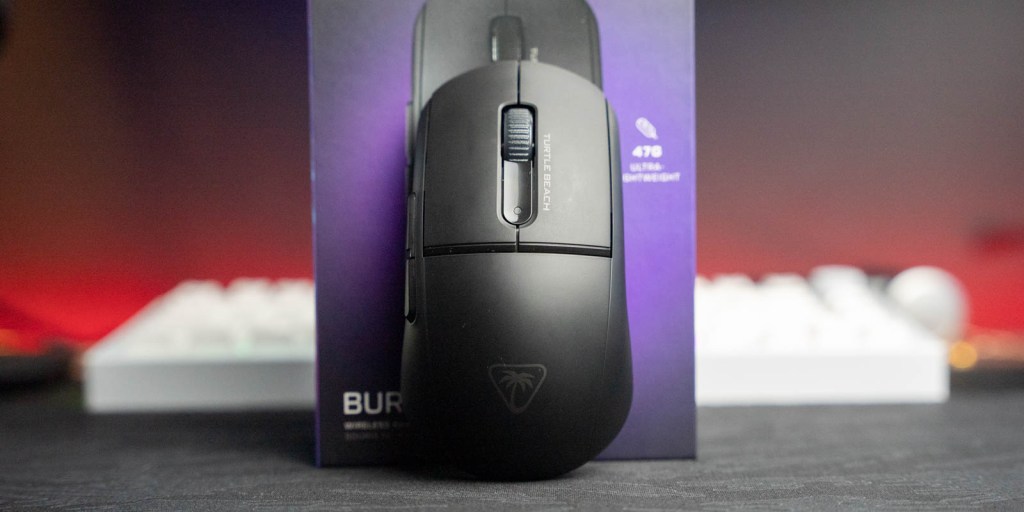
How’s the build?
Where the price point starts to make a little more sense is with the build quality of the Burst II Air. It’s not terrible, but it’s not on par with the Viper V3 Pro and the Superlight 2.
There is considerable flex on the sides. That isn’t that surprising considering the light weight of the mouse but I’d love to see it more rigid.
Additionally, there is a rattle when shaking the mouse. Once again, it’s not a deal-breaker per se, but it doesn’t feel as solid as the Razer and Logitech offerings. But, for those on a budget, there is a $60 price difference between the Turtle Beach and the premium Razer and Logitech mice.
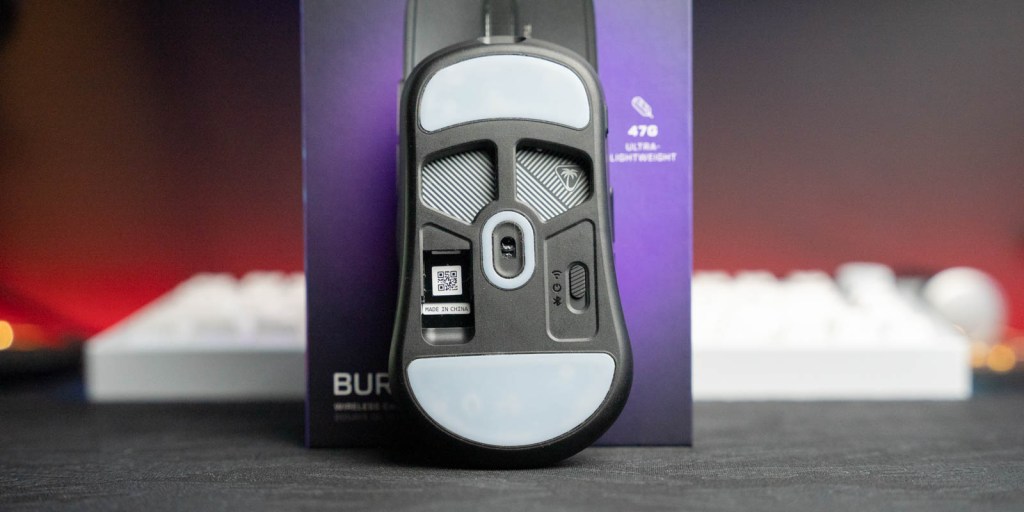
Skates
Out of the box, the Burst II Air has a small pair of skates both in front and at the back. But, Turtle Beach also includes a set of much bigger skates that can be installed on the mouse. I found the glide on the stock skates to be a little less than the Viper V3 Pro – it felt like there was more resistance. But, swapping to the larger skates felt better in my opinion. I’m not on a high-end gaming mousepad, though. I’m using the massive Razer Gigantus V2 3XL.
Switches
Turtle Beach is using their Titan Switch Optical on the Burst II Air with adjustable debounce and a 100-million click life cycle. It’s a bit sharper in sound and feel than the Viper V3 Pro, but not quite as much as the Superlight 2.
There is very minimal pre-travel and post-travel. The mouse 1 and 2 clicks feel light, snappy, and very satisfying.
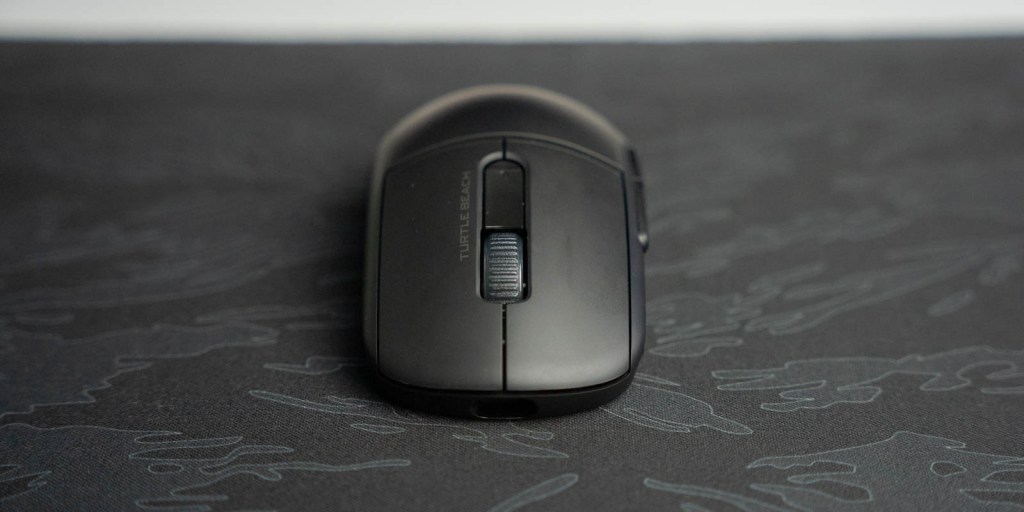
Thumb buttons
The thumb buttons feel similar to the Viper V3 Pro and Superlight 2. They have a more tactile, clicky feel and sound than both of those mice, though. I also find them just the slightest bit easier to reach and actuate. They are slightly higher than the Superlight 2 and are placed at more of an angle than the Viper V3 Pro.
Burst II Air: Sensor
Turtle Beach’s Owl-Eye sensor delivers up to 26k DPI and 650 IPS tracking speed with a max acceleration of 50g. Through the SWARM II software, the debounce time can be changes as well as enabling motion sync and angle snapping.
Another thing that sets the Burst II Air apart from the Viper V3 Pro and Superlight 2 is the polling rate. While bo th of those mice can go up to 4K and 8K for the Razer, the Turtle Beach is limited to 1K Hz polling.
Now, it’s still up for debate how much the average gamer will notice a higher polling rate in use but for those seeking the absolute highest performance, that might be a deterrent.
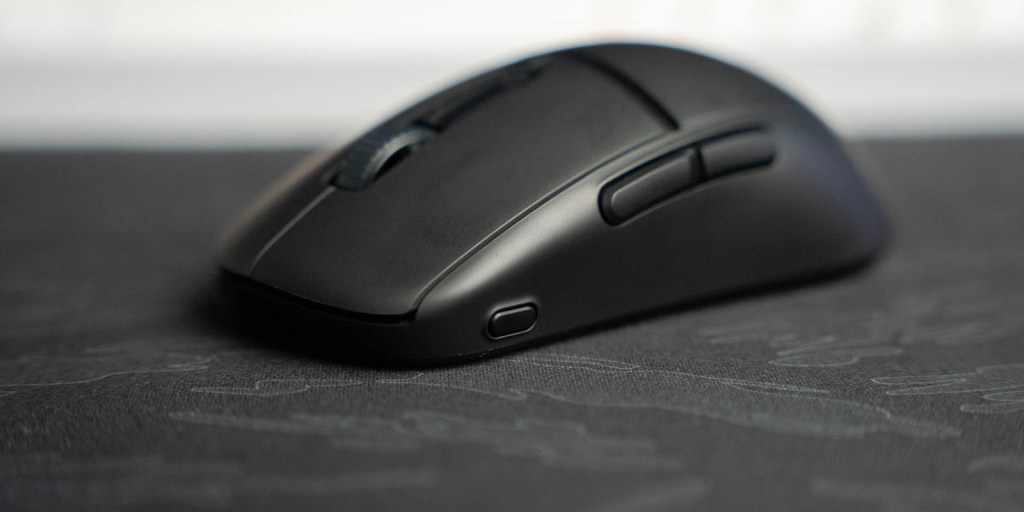
Scroll wheel
The scroll wheel is both smaller and more recessed than the mice I’m used to. Because of that, I find myself dragging my finger over the front of the mouse when using the scroll wheel. I might get used to it over time, but in the week that I’ve been using it, I still prefer a larger, more pronounced scroll wheel.
Otherwise, though, it has enough resistance to avoid accidental activation and is easier to push in than the Superlight 2.
Burst II Air: Battery life
Turtle Beach is claiming up to 40 hours on wireless and 120 hours on Bluetooth. I’ve been using the Burst II Air all week and have only charged it one time.
If you need to plug it in to charge, the cable is very malleable and doesn’t drag much.
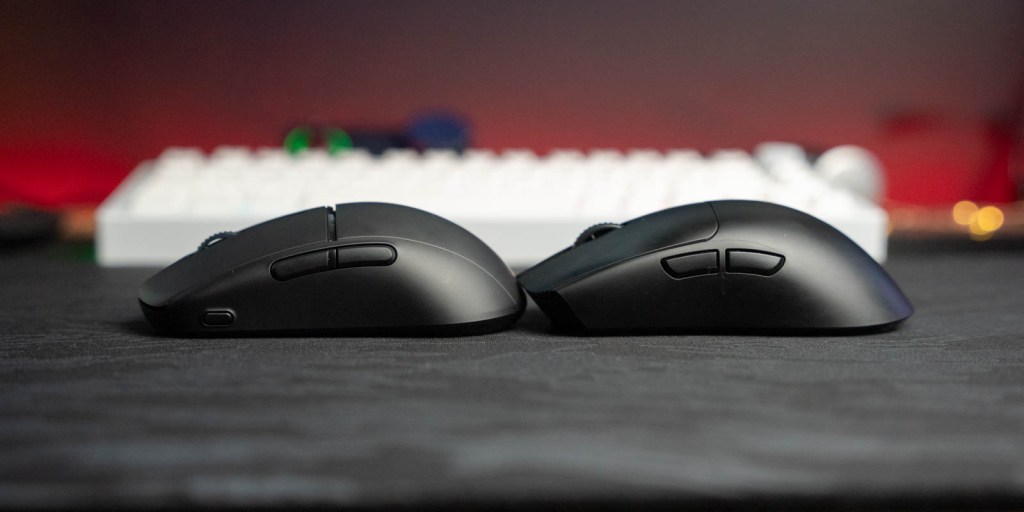
9to5Toys’ Take
I was immediately interested in the Burst II Air when I saw its weight. 47g is very light from a big-name brand. And at just $99, it was even more intriguing considering that the 54-gram Viper V3 Pro and 60-gram Superlight 2 are both $160.
However, it lacks some of the other premium features of those FPS mice. The build isn’t as high quality and it can only go up to 1K Hz polling.
But the Burst II Air is a great deal for those on a budget or who just want the lightest mouse possible. It’s been fun to use something this easy to move, but ultimately, I’ll return to the Viper V3 Pro as my main mouse for gaming.
Hopefully, we get higher-end “Pro” mice from Turtle Beach as well. With higher build quality and a few more features, it could be an interesting contender against the higher-end mice.
Buy Turtle Beach Burst II Air
FTC: We use income earning auto affiliate links. More.




Comments